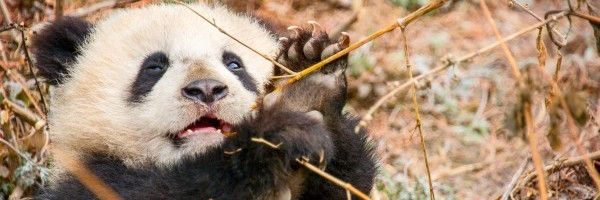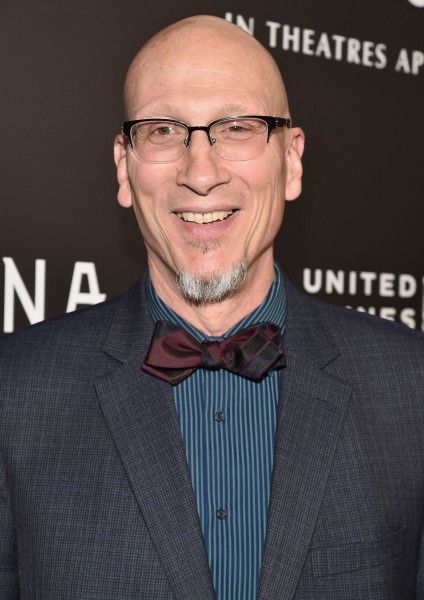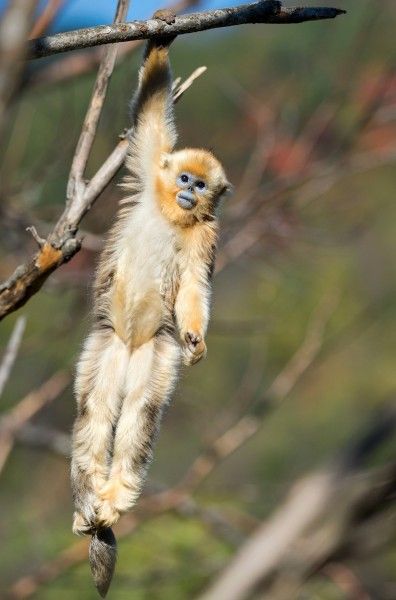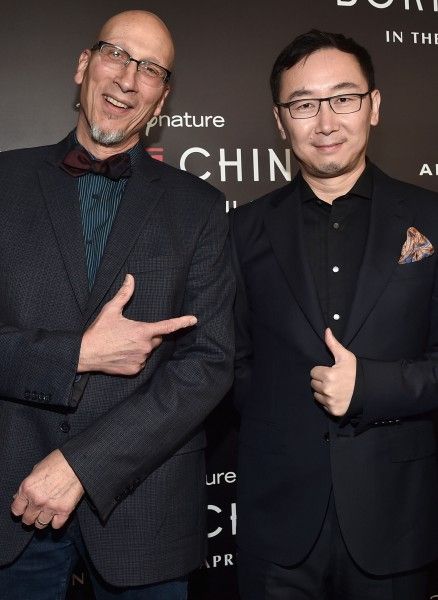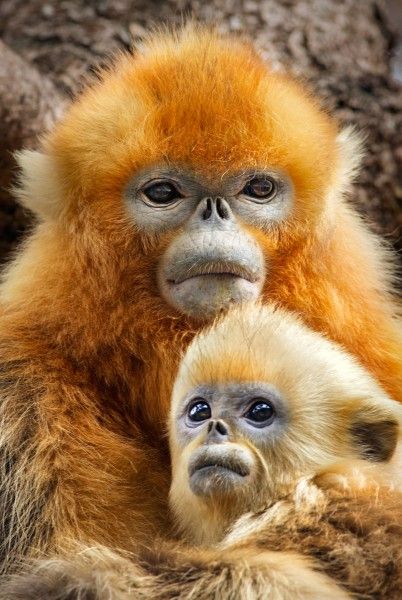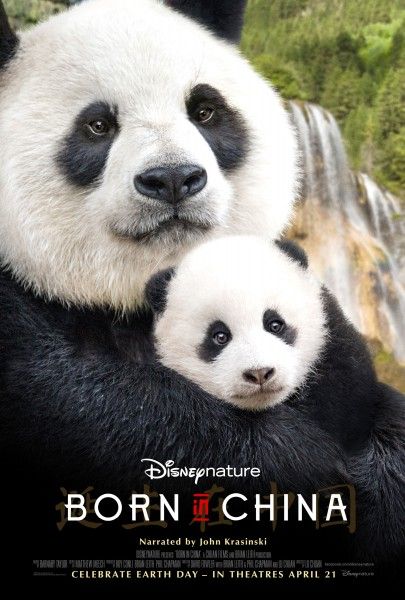Narrated by John Krasinski, the latest Disneynature documentary film Born in China takes audiences on an epic, exciting and, at times, heartbreaking journey into the wilds of China where few people ever get the opportunity to venture. Whether it’s a doting panda bear mother teaching her growing baby, a golden snub-nosed monkey who’s feeling displaced by his new baby sister, or a mother snow leopard trying to raise her two cubs in a harsh and unforgiving environment, you will witness intimate moments in the lives of animals that are just trying to get by, day to day.
At the film’s press day, Collider participated in a roundtable interview with producer Roy Conli and a small group of media outlets, where he discussed how he got involved with Born in China, what he enjoyed about the experience of making a film like this, the immense challenge of getting the needed footage, how they form the story, why John Krasinski was the right narrator, the message he hopes that audiences will get from it, and what he’s working on next.
Question: Is this your first film with Disneynature, as a producer?
ROY CONLI: Yeah, this is the first time that I’ve gone into this style [of filmmaking]. I originally came from the theater, and then, about 24 years ago, I started working in animation. I’ve done quite a few animated films now. Coming out of my last animated film, Big Hero 6, I was asked if I would be interested in coming on and helping out. The next thing I knew, I was producing [Born in China].
What did you enjoy about the experience of making a film like this?
CONLI: I’ve fallen in love with this whole process, working with these amazing cinematographers. And then, on top of that, working with Lu Chuan, who’s the director of the piece, he’s an amazing narrative filmmaker from China. I think he’s probably one of the stronger directors in China, right now. But it’s the cinematographers who really are the unsung heroes in the process. Shane Moore, who was the cinematographer for the snow leopard unit, was in the field for 253 days. He took four trips, over about a year and a half to two year period, and he did not get his first shot of snow leopards until the 90th day. We were in those locations on 90-day visas.
Fortunately, we had the cooperation of the Chinese government and Chuan Films was a partner with us, in producing this. The amazing footage that you see is a cinematographer who has tracked big cats throughout the world. Shane has done cats in Africa and South America. He’s really familiar with how to set this up, and it was his expertise and his ability to withstand one of the harshest places on this planet. The Qinghai plateau, where this was shot, is 16,000 feet above sea level. There were medics and oxygen on set. It took them ten days from Beijing to get there because they had to acclimatize slowly, otherwise altitude sickness is a real potential thing.
So, it was Shane understanding cats and doing lots of scouting, up front, that allowed that footage to take place. And it was the same thing with all of the other animals. Monkeys are probably the easiest of the animals to infiltrate, only because they want to play for the camera and they’re not as afraid of the humans as a snow leopard. It’s the same thing with pandas. It’s an 800-pound animal with a cub, so you need to stay sufficiently away. Our cinematographers literally donned panda suits and put panda sent on themselves, in order to blend into the hillside and be able to get the shots that they did.
Did you go to each filming location?
CONLI: No, I was not everywhere. I’ve been to the panda location, but I did not go to the snow leopard location.
What’s the process in the storytelling? Did you get the footage first, and then craft the story out of it?
CONLI: That’s a good question. With animation, you start from whole cloth, from the beginning. You write a script and you storyboard, and you eventually end up with a final image. With a nature film, the cinematographers, and at times Chuan, who was not always in the field with the cinematographers because there were multiple teams working simultaneously, what happens is that they are journaling the behavior that you see. There are people on set who record what’s going on, and we then start getting massive amounts of rushes. For this film, which is a 75-minute film, we have over 400 hours of footage. And then, Chuan, myself, David Fowler, the writer, and Phil Chapman and Brian Leith, who were our partners from Bristol and wildlife experts themselves, started crafting the stories. The structure of the three stories really came from Chuan. If you have not seen his films, it’s worth a weekend to get to know him, as a director. He’s brilliant, and he did an amazing job, in terms of encompassing within a parenthetical aspect, the spiritual with the cranes and the earthly with the chiru, to bring these incredible stories to life. It was just a pleasure, and it taught me, once again, that story is pretty international, in terms of how you can affect and touch people’s hearts.
What was it about John Krasinski that made you want him to narrate this?
CONLI: I knew with this that we were going to have comedy, drama and heart, and I wanted to find someone who really could embody those three things. I’ve always been drawn to Krasinski, as an actor. He’s a director, a writer, and an amazing performer. He’s able to get to the heart, do the drama, and be a great comedian, and I love his voice. His phrasing, for me, is really special. He totally embraced this. He worked with our writer and improvised, to some extent, within the structure of the script.
What message do you hope young people take from this film?
CONLI: That’s a great question. For me, being an animal guy and being totally devoted to my dogs and cat and rabbit, the wonderful thing about this, is that I don’t find that much difference between the animal world and our world. I think it’s wonderful, if not only kids but parents walk away understanding that a familial structure is a really important thing. Even a monkey can get jealous of his baby sister, a mother can be worried about the fact that her child is eventually going off into the world, and survival is tough. I think this piece really reflects on our everyday lives. Every film that I’ve ever done, the underlying film is about strengthening the audience’s awareness of who they are and how they relate to this piece of art, and this film is no exception. I’m as proud of this film as I am of Big Hero 6, Tangled, or any other animated film that I’ve done in the past. It has an emotional relevance that is so uplifting, in the long run, and will help kids understand the natural world. There are three things that we talk about, which is that we want to inspire, we want to educate, and we also want to entertain. I don’t think that’s different than anything I’ve ever done, in theater, in animation, or on this project.
What can you say about the next nature film and the two animated films that you’re currently working on?
CONLI: I’m working on the next nature film, and it’s in water. I’m helping out on that, but I’m not producing because the two projects I’m producing in animation are taking a lot more time. One of my animated projects will be coming out in the fall of this year, and that will be announced at D23. That’s a special little project. And then, the other animated project will be coming out in a couple of years.
Born in China opens in theaters on April 21st.

